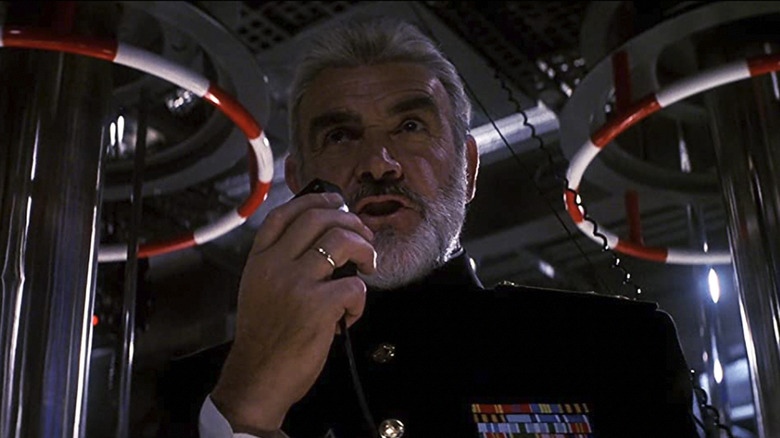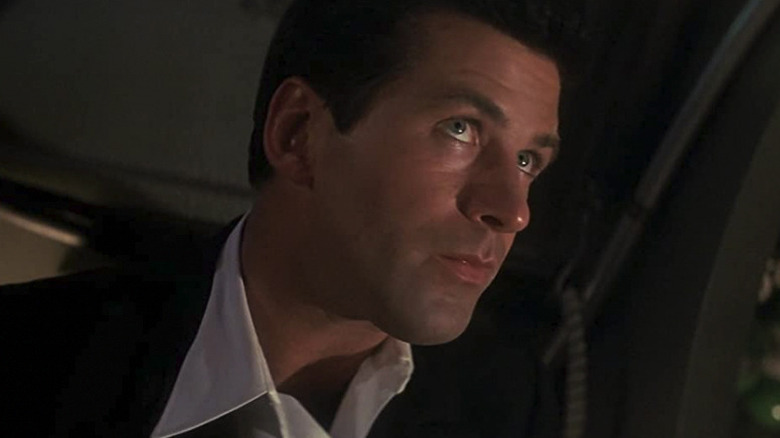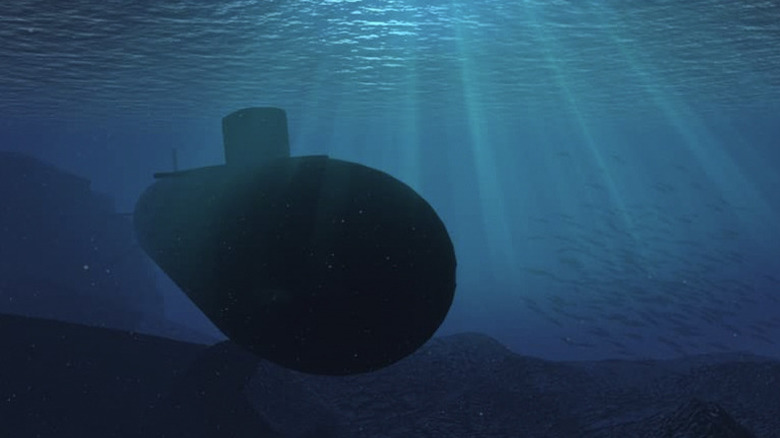The Hunt For Red October Director Fought For Undersea Realism, But The Studio Had Other Ideas
The 1990 film adaptation of Tom Clancy's "The Hunt for Red October" is a sturdy, tension-filled submarine thriller featuring fine work from Sean Connery and Alec Baldwin. As an author, Clancy was known for writing potboiler action stories set in the world of the military (he wrote the Jack Ryan books, as well as novels like "Without Remorse" and "Rainbow Six") and he was especially known for his attention to detail. As a director, filmmaker John McTiernan was known for delivering successful blockbusters like "Predator" and "Die Hard" by entertainingly establishing the geography of the action and letting his actors make magic within those spaces.
But when McTiernan tried to take a realistic approach to the undersea elements of "The Hunt for Red October," Paramount executives shut him down by stepping in, taking the film away from one visual effects company, and handing it to the team at Industrial Light and Magic (ILM) in order to replace the look McTiernan wanted with something more conventional.
I recently spoke with Steve Beck, a visual effects art director at ILM, for an upcoming project, and the conversation briefly turned to what happened behind the scenes of the submarine thriller:
"[ILM] inherited all the work on 'The Hunt for Red October,' and there were two reasons. One reason was the director's vision wasn't working, and the second reason was, because it wasn't working, he had basically sacrificed all the work that Boss Film had done on the project, and the studio said, 'You're no longer doing this with Boss, you are no longer in charge of the visual effects.' And they gave it to us just to make sure the film got completed and got out there to the theaters."
The reason the studio took the visual effects control away from McTiernan? It all comes down to bioluminescence — when a living organism produces and emits light.
'A glow, if you will'
Boss Film was a visual effects company that served as a competitor to ILM in the '80s and '90s, working on films like "Ghostbusters" and "Big Trouble in Little China." McTiernan had previously worked with them on "Die Hard," which presumably is why he retained their services again for "The Hunt for Red October," but the problem came when McTiernan wanted Boss Film to achieve what he saw as a realistic look for a submarine slicing through the ocean. As Beck explained:
"The thing [John McTiernan] was searching for was — it was actually a very practical understanding. He was searching for the effect that large mass moving through waters at a certain speed generate bioluminescence — a glow, if you will. And all the stuff that they had done for it at Boss, the studio looked at it and said, 'What in the hell is all this glowing stuff?' And he kept trying to rectify what he was searching for, and they just wouldn't have it, until the studio finally just took the picture away from them and said, 'Look, these guys are going to do it. Here's the boards. Go with God, get this thing done.' So Boss lost a film, we finished it up to the studio's acceptance and it went out and was a big hit."
A real-world phenomenon
McTiernan didn't pull the bioluminescence idea out of thin air — there was actually historical precedent for it. According to Atlas Obscura, a German submarine was sunk in 1918 during World War I after it moved through a field of bioluminescent plankton, causing the organisms to emit light and give away the sub's position. During the Cold War, the United States and the Russians even tried to develop programs that would allow them to weaponize this biological phenomenon to work in their favor as an unconventional detection method for enemy vehicles, but neither side could ever crack an effective way of making it happen.
While I'm naturally supportive of a filmmaker being allowed to realize their vision when making a movie, this is an example of a studio note that I actually agree with. The science behind this phenomenon makes sense, but seeing a sub seemingly generate light as it raced through the water may have confused viewers in the theater and distracted from the tension of the story. And from the sound of it, this was apparently enough of a sticking point that it was about far more than just a couple of shots that could be easily replaced. While McTiernan may have been technically correct about the realism of what a submarine would have looked like, sometimes movie logic works better than real-world logic.


